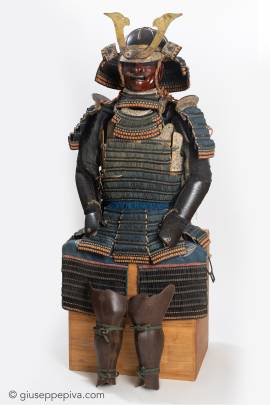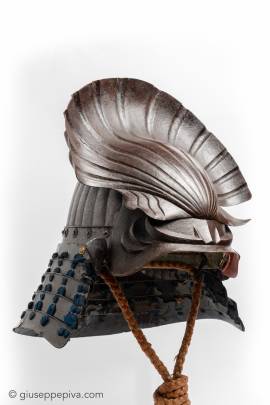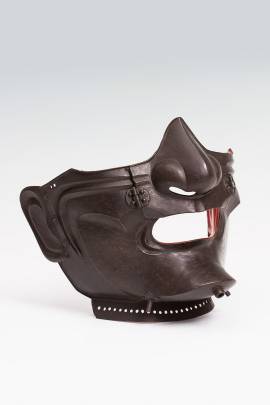Azuchi-Momoyama period (1575 - 1615)16th century, refurbished in 1796 Provenance:Takekoshi Dochin (died 1556)Matsuoka OshikasukeInscribed under one sode: 寛政癸戌春被属修理 / 竹腰道鎮公古甲 松岡牡鹿輔 + kaoAccording to a label stitched inside one of the sode, the armor was repaired in 1796. The inscription is signed by Matsuoka Oshikasuke, a scholar of the Tokugawa clan, retainer in Nagoya, student of Motoori Norinaga.Takekoshi Dochin, whose name is written by Oshikasuke in his inscription, was a general commander of the Sengoku period, lord of the Ogaki castle in Mino. He died in 1556 during the battle of...
WORKS FOR SALE
Samurai helmet hammered in the shape of a scallopLate Edo period (1615–1867)Signature: Kashū jū Myōchin ki Munehisa saku加州住明珍紀宗久作 The latter part of the Edo period saw the production of kawari kabuto of impressive execution quality. Myōchin Munehisa, an armorer working in Kanazawa in Kaga province, was one of the late masters of iron working, and the samurai helmets and masks he produced during the 19th century are true evidence of virtuosity. Attention to every detail makes his works of the highest standard; in fact, in this helmet, Munehisa did not merely seek out a visually...
Half mask for samurai armor with a fierce expressionMid Edo period (1615 - 1867) 18th centuryMyōchin school A russet iron mask of me no shita men (half face) type with very sharp embossing. The design shows a peculiar pattern, with stylised cheek bones; the angled line is repeated on the top border close to the ears.Even if the mask in unsigned, the type, and the features suggest a smith from the Myochin school.On this page is a comprehensive glossary of common terms related to samurai armor.Menpo for sale
Copyright © 2016 - giuseppe piva - VAT: 05104180962










